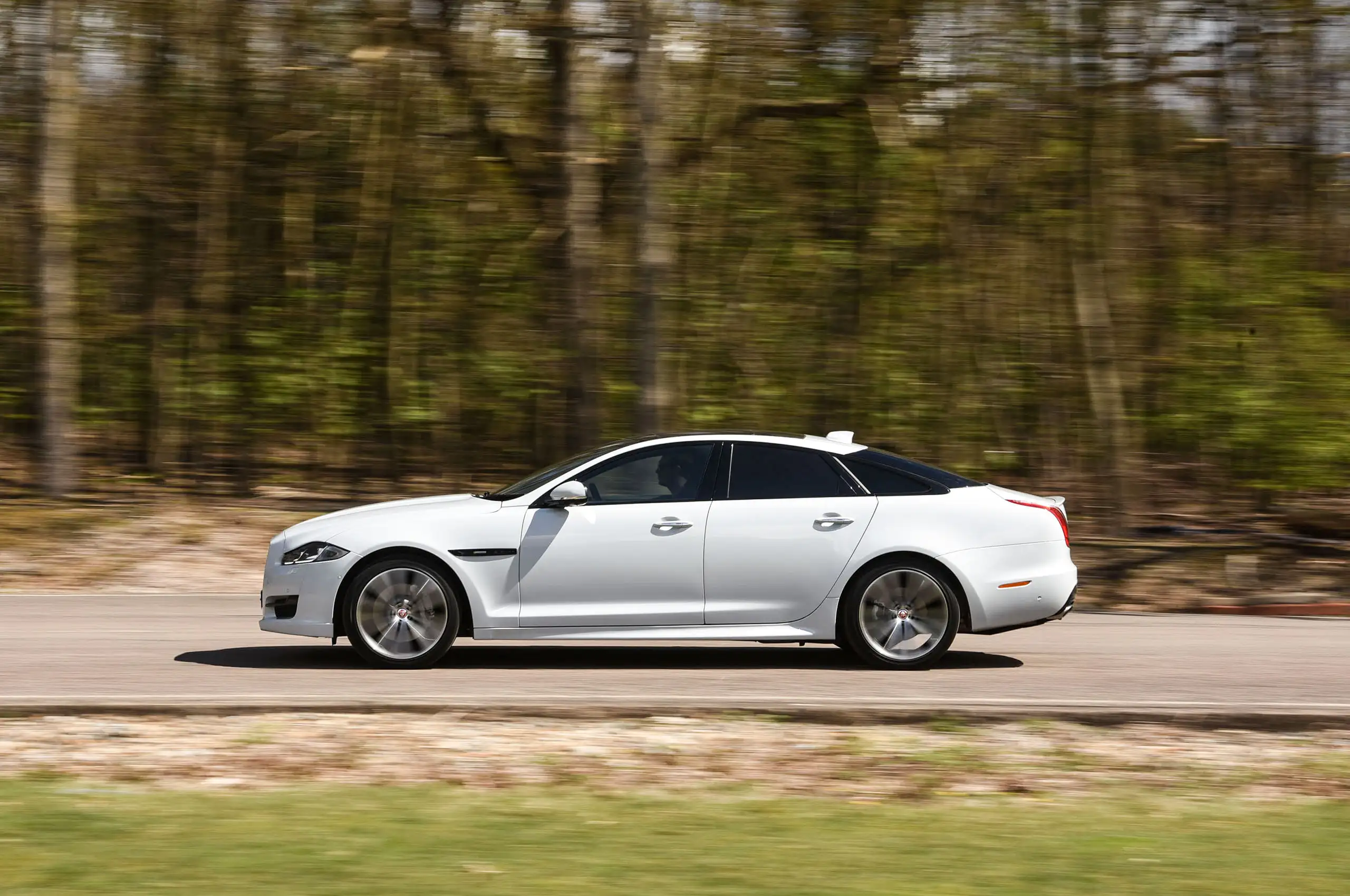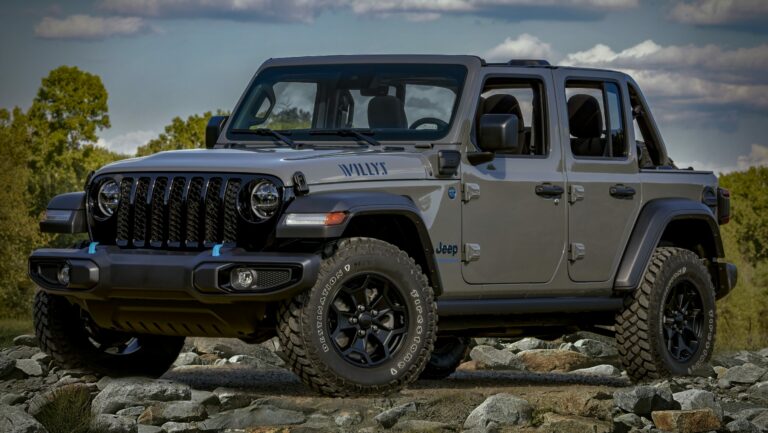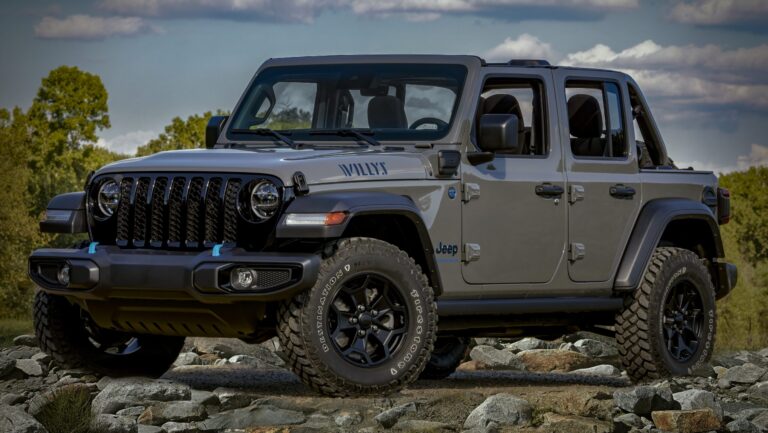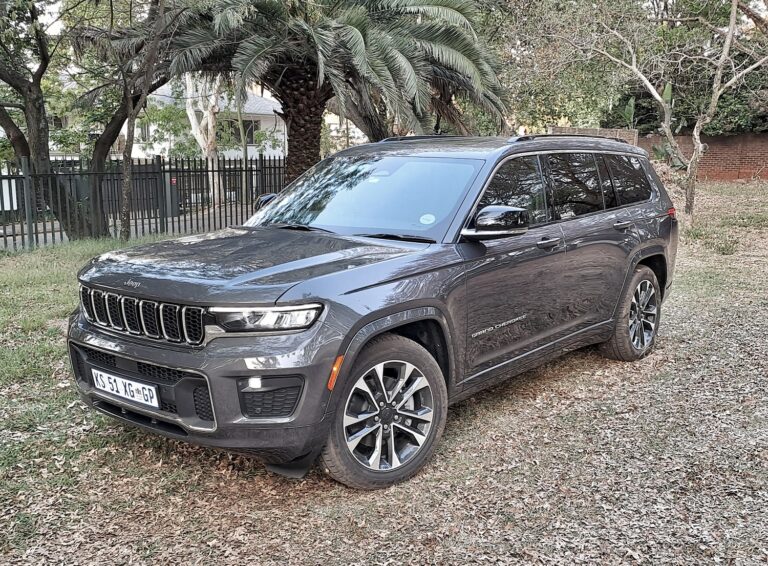XJ Jeep Cherokee With Lift For Sale: Your Ultimate Guide to an Off-Road Icon
XJ Jeep Cherokee With Lift For Sale: Your Ultimate Guide to an Off-Road Icon jeeps.truckstrend.com
The allure of a rugged, capable, and undeniably cool vehicle often leads enthusiasts down the path of the Jeep Cherokee XJ. Produced from 1984 to 2001, the XJ Cherokee stands as a testament to simple, robust engineering, offering an unbeatable blend of durability, customization potential, and off-road prowess. When you add a lift to this already legendary platform, you transform it into an even more formidable machine, ready to conquer challenging terrains and turn heads on the street.
"XJ Jeep Cherokee with Lift For Sale" isn’t just a search query; it’s a gateway to a vibrant community of off-roaders, DIY mechanics, and automotive purists. These vehicles are highly sought after for their iconic looks, unibody construction (which offers a surprising balance of rigidity and lightness), the venerable 4.0-liter inline-six engine, and an aftermarket support system that is second to none. A lifted XJ enhances its ground clearance, allows for larger tires, and significantly improves approach, departure, and breakover angles, making it a true off-road beast. This article serves as a comprehensive guide for anyone looking to buy, understand, or simply appreciate the phenomenon of the lifted XJ Cherokee.
XJ Jeep Cherokee With Lift For Sale: Your Ultimate Guide to an Off-Road Icon
The Enduring Appeal of the XJ Cherokee
The Jeep Cherokee XJ, often dubbed "the unibody wonder," holds a special place in automotive history. Unlike traditional body-on-frame SUVs of its era, the XJ pioneered a unibody design that fused the body and frame into a single structure. This innovative approach resulted in a lighter, more fuel-efficient, and surprisingly rigid vehicle that still managed to deliver genuine off-road capability. Its compact size, combined with solid axles (Dana 30 front, Dana 35 or Chrysler 8.25 rear), made it incredibly agile on trails while maintaining a comfortable ride for daily driving.
Its popularity has only grown since production ceased. Why? Because the XJ is simple to work on, parts are abundant and relatively inexpensive, and its legendary 4.0L "straight-six" engine is renowned for its durability and torque. For off-road enthusiasts, the XJ is a blank canvas, eagerly awaiting modifications. And few modifications are as transformative as a lift kit.
Understanding Lift Kits for XJ Cherokees
A lift kit on an XJ Cherokee primarily involves modifying the suspension to raise the vehicle’s ride height. Unlike body-on-frame vehicles that can have "body lifts" (spacers between the body and frame), the XJ’s unibody design means lifts are almost exclusively suspension-based. This directly impacts suspension geometry, which is why choosing the right lift is crucial.
Types of Lift Kits:

- Budget Boosts (1-2 inches): Typically involve coil spacers in the front and add-a-leafs or shackles in the rear. These are inexpensive and offer a slight height increase for larger tires, but provide minimal performance improvement.
- Short Arm Lifts (2-4.5 inches): The most common type. These replace coil springs, leaf springs, and shocks, often with new fixed or adjustable control arms. They offer a good balance of ride quality, off-road capability, and tire clearance.
- Long Arm Lifts (4.5+ inches): Designed for serious off-roaders, these kits relocate the control arm mounting points further back on the frame, using much longer control arms. This significantly improves suspension articulation, reduces control arm angles, and provides a smoother ride over rough terrain, but comes at a higher cost and requires more extensive installation.
- Full Spring Replacement: Instead of spacers or add-a-leafs, these kits replace all four springs (coils in front, leaf springs in rear) for consistent lift and improved ride quality.

Common Lift Heights:
- 2-3 inches: Ideal for fitting 30-31 inch tires, offers a noticeable visual improvement and minor off-road benefits without major drivetrain modifications.
- 3-4.5 inches: The sweet spot for many, allowing for 31-33 inch tires and significant off-road gains. May require slip yoke eliminator (SYE) and CV driveshaft to prevent driveline vibrations.
- 6+ inches: For extreme off-roading, accommodating 33-35+ inch tires. Requires extensive modifications, including long arms, re-geared axles, and reinforced steering components.

Benefits of a Lifted XJ Cherokee
The decision to lift an XJ is driven by a desire for enhanced capability and aesthetics. The benefits are numerous:
- Enhanced Off-Road Capability: A higher ride height directly translates to improved ground clearance, allowing the XJ to clear obstacles that would otherwise snag the undercarriage. Better approach, departure, and breakover angles mean you can tackle steeper climbs, descents, and crest hills without scraping.
- Accommodates Larger Tires: Lifts are often installed specifically to fit larger diameter tires (e.g., 31s, 33s, 35s). Larger tires provide a bigger contact patch for increased traction, especially on loose surfaces, and further increase ground clearance.
- Improved Aesthetics: There’s no denying the aggressive, purposeful stance a lifted XJ commands. It looks ready for adventure, standing taller and more imposing than its stock counterparts.
- Better Articulation: Quality lift kits, especially those with longer control arms and flexible bushings, allow the suspension to flex more freely, keeping tires on the ground over uneven terrain and improving traction.
Key Considerations When Buying a Lifted XJ
Purchasing a pre-lifted XJ can save you time and money compared to building one from scratch, but it comes with its own set of challenges. Thorough inspection and asking the right questions are paramount.
- The Lift Itself:
- Brand and Quality: Is it a reputable brand (e.g., Rough Country, Zone, TeraFlex, Clayton, Rock Krawler)? Cheap, no-name lifts can compromise ride quality and safety.
- Installation: Was it professionally installed or a DIY job? Poor installation can lead to alignment issues, death wobble, and premature component wear.
- Age and Wear: How old is the lift? Are the shocks, springs, bushings, and control arms worn out? Look for cracks, rust, and excessive play.
- Underlying Vehicle Condition: The lift is only as good as the platform it’s built upon.
- Rust: The XJ’s Achilles’ heel. Check rocker panels, floorboards, frame rails (especially unibody stiffeners), door sills, and rear hatch area. Surface rust is manageable; structural rust is a deal-breaker.
- Engine (4.0L I6): Listen for knocks, ticks, or unusual noises. Check for fluid leaks (oil, coolant, power steering). Look for signs of proper maintenance (clean oil, service records).
- Transmission & Transfer Case: Test drive to check for smooth shifts (automatic) or proper engagement (manual). Ensure the transfer case shifts into 4HI and 4LO without grinding.
- Axles & Gearing: Are the axles stock or upgraded? If larger tires (33"+) are installed, have the axles been re-geared to compensate for the loss of power and efficiency? Without proper gearing, the XJ will feel sluggish and suffer poor fuel economy.
- Steering & Suspension Components: Beyond the lift kit, check tie rods, drag link, track bar, ball joints, and wheel bearings for play. These are common culprits for "death wobble."
- Electrical & Interior: Test all lights, gauges, HVAC, and power windows. Check for water leaks.
- Additional Modifications: Many lifted XJs come with other upgrades like aftermarket bumpers, winches, rock sliders, or enhanced lighting. Ensure these are well-installed, functional, and add value to your needs.
- Paperwork: Request maintenance records, receipts for the lift kit and other modifications. A clean title is essential.
Where to Find Lifted XJ Cherokees For Sale
The XJ community is vast, and there are several excellent avenues for finding your next off-road companion:
- Online Marketplaces:
- Facebook Marketplace: Often the most active, with local listings and dedicated XJ buy/sell groups.
- Craigslist: Still a reliable source for private sellers.
- eBay Motors: Good for nationwide searches, but requires more caution for out-of-state purchases.
- Dedicated Forums & Enthusiast Sites:
- NAXJA (North American XJ Association): Has classifieds sections where enthusiasts sell their well-maintained or custom-built XJs.
- Cherokee Forum: Another popular forum with a marketplace.
- Off-Road Shops & Specialized Dealers: Some shops that specialize in Jeeps or off-road vehicles may have lifted XJs for sale. These might be pricier but often come with a level of vetting or even a warranty.
- Word of Mouth & Local Off-Road Clubs: Connect with local off-road communities. You might find a well-loved XJ ready for a new home.
Tips for Inspecting a Lifted XJ Before Purchase
Before handing over your hard-earned cash, a thorough inspection is non-negotiable.
- Visual Walk-Around: Look for consistent panel gaps, signs of accident damage, and paint quality. Most importantly, scrutinize for rust on the body, frame, and undercarriage. Bring a flashlight!
- Under the Hood: Check fluid levels and condition (oil, coolant, brake fluid, power steering). Look for leaks, frayed belts, and cracked hoses. Start the engine cold and listen for any unusual noises.
- Underneath the Vehicle: Inspect the lift components – shocks, springs, control arms, bushings, track bar, and driveshafts. Look for worn bushings (cracked rubber), bent components, or signs of impact damage. Check for fluid leaks from the axles, transfer case, and transmission.
- Test Drive:
- Steering: Feel for excessive play, vagueness, or a tendency to wander. Pay close attention to any shaking in the steering wheel, especially at highway speeds, which could indicate "death wobble."
- Brakes: Ensure they are firm and stop the vehicle smoothly without pulling.
- Acceleration: Check for smooth power delivery. If equipped with larger tires and stock gearing, it might feel sluggish.
- Transmission: Smooth shifts in automatics; good clutch engagement in manuals.
- 4WD: Test 4HI and 4LO in a safe, appropriate area (e.g., dirt field) to ensure they engage properly.
- Noises: Listen for clunks, squeaks, grinding, or whining noises, especially over bumps or during turns.
- Ask Questions: Inquire about the vehicle’s history, maintenance records, the specifics of the lift kit and its installation, and any known issues. Don’t be afraid to ask why they’re selling.
- Pre-Purchase Inspection (PPI): If you’re serious, especially for higher-priced XJs or those requiring travel, invest in a PPI by a trusted independent mechanic specializing in 4x4s or Jeeps.
Common Challenges & Solutions with Lifted XJs
While highly rewarding, owning a lifted XJ can present a few common issues:
- Death Wobble: This violent shaking of the front end, typically at highway speeds, is the most infamous XJ issue.
- Solution: Usually caused by worn steering or suspension components (track bar, tie rods, ball joints, control arm bushings, wheel bearings), improper alignment, or unbalanced tires. A systematic diagnosis and replacement of worn parts are key.
- Increased Wear on Components: Lifting and larger tires put more stress on the drivetrain (U-joints, driveshafts, axles), steering, and brakes.
- Solution: Regular inspection and maintenance, upgrading components to heavy-duty versions if frequently off-roading.
- Reduced Fuel Economy: Larger tires and aerodynamic changes from the lift will inevitably decrease MPG.
- Solution: Proper gearing helps mitigate this, but ultimately, accept that a lifted XJ is not a fuel-sipper.
- Stiffer Ride Quality: Some lift kits, especially budget-oriented ones, can lead to a harsher ride.
- Solution: Investing in quality shocks, progressive rate springs, or a long-arm kit can significantly improve ride comfort.
- Driveshaft Vibrations: Common with lifts over 3 inches, caused by altered driveshaft angles.
- Solution: Installing a Slip Yoke Eliminator (SYE) kit and a CV (Constant Velocity) driveshaft is the most effective solution.
Practical Advice and Actionable Insights
- Set a Realistic Budget: Beyond the purchase price, factor in potential immediate repairs, maintenance, and future upgrades.
- Condition Over Mods: A solid, rust-free XJ with a basic lift is a better investment than a heavily modified, rusty one with underlying mechanical issues. You can always add mods later.
- Educate Yourself: Learn about common XJ problems, maintenance procedures, and the basics of suspension geometry. The more you know, the better informed your purchase and ownership experience will be.
- Join the Community: XJ owners are a passionate and helpful bunch. Join online forums, Facebook groups, or local clubs. This is an invaluable resource for advice, parts, and camaraderie.
- Be Prepared for Ongoing Maintenance: These are older vehicles. While robust, they will require regular attention. Embrace the DIY aspect, and you’ll save a lot of money.
Pricing Table: XJ Jeep Cherokee With Lift For Sale – Factors & Ranges
The price of a lifted XJ Cherokee can vary wildly based on its condition, the quality and extent of its modifications, mileage, and geographic location. This table provides estimated price ranges for pre-lifted XJs based on their overall state.
| Factor/Condition | Description | Estimated Total Price Range (USD) |
|---|---|---|
| "Project" XJ (Lifted) | Significant rust, major mechanical issues (e.g., non-running, blown engine/trans), likely needs full restoration or extensive repair. Lift components may be basic or worn. | $1,500 – $4,000 |
| "Driver" XJ (Lifted) | Noticeable rust (but manageable), high mileage, runs and drives, functional lift (basic to mid-range), needs ongoing maintenance and potential upgrades. A good starting point. | $4,000 – $8,000 |
| "Trail-Ready" XJ (Lifted) | Minor or minimal rust, well-maintained engine/transmission, reliable. Equipped with a quality mid-range to advanced lift, larger tires, and possibly basic armor/recovery gear. Ready for immediate use. | $8,000 – $15,000 |
| "Show/Custom" XJ (Lifted) | Immaculate condition, often low mileage for age, professionally built with high-end components (long arm, re-geared axles, lockers, custom fabrication, extensive armor, etc.). | $15,000 – $30,000+ (Can go much higher depending on the extent and quality of custom work, engine swaps, etc. These are often enthusiast-built with significant investment beyond market value for parts and labor alone.) |
| Key Influencing Factors | Mileage & Maintenance History: Lower mileage and documented maintenance increase value. Engine & Drivetrain Condition: Healthy 4.0L I6 and solid drivetrain are paramount. Rust Presence & Severity: The single biggest factor impacting value and longevity. Lift Kit Quality & Installation: Brand-name components, proper installation, and recent refresh add value. Additional Modifications: Bumpers, winch, lockers, re-gearing, etc., add value if well-executed and desired by buyer. Geographic Location: Market demand and rust exposure vary by region. Seller Type: Private vs. Dealer (dealers often higher price for perceived reliability/convenience). |
Frequently Asked Questions (FAQ)
Q1: What is an XJ Jeep Cherokee?
A1: The XJ Jeep Cherokee refers to the compact SUV produced by Jeep from 1984 to 2001. It’s known for its unibody construction, ruggedness, and the durable 4.0-liter inline-six engine.
Q2: Why lift an XJ?
A2: Lifting an XJ primarily increases its ground clearance, allowing it to clear obstacles more easily off-road. It also enables the fitment of larger tires, which further improves off-road capability and gives the vehicle a more aggressive aesthetic.
Q3: What are the common lift heights for an XJ?
A3: Common lift heights range from 2-3 inches for mild off-roading and larger tires, to 3-4.5 inches for significant capability, and 6+ inches for extreme off-roading.
Q4: What is "death wobble" and how do I fix it?
A4: Death wobble is a violent, uncontrollable shaking of the front end, typically experienced at highway speeds. It’s usually caused by worn or loose steering and suspension components (e.g., track bar, tie rods, ball joints, control arm bushings) or unbalanced tires. Fixing it involves diagnosing and replacing the worn components, ensuring proper alignment, and balancing tires.
Q5: What should I look for when buying a lifted XJ?
A5: Prioritize the vehicle’s underlying condition, especially rust. Inspect the engine, transmission, axles, and all suspension/steering components for wear or damage. Verify the quality and installation of the lift kit. Always conduct a thorough test drive.
Q6: Are lifted XJs reliable?
A6: The XJ platform is inherently reliable, especially with the 4.0L engine. However, a lifted XJ, especially one that has been used hard off-road or poorly modified, can experience increased wear on components. With proper maintenance and quality modifications, they can be very dependable.
Q7: Can I daily drive a lifted XJ?
A7: Many people daily drive lifted XJs. However, ride quality can be stiffer, fuel economy will be lower, and steering might feel less precise than a stock vehicle. It largely depends on the quality of the lift and the overall condition of the vehicle.
Q8: How much does a lifted XJ cost?
A8: Prices vary widely, from $1,500 for a project vehicle to over $30,000 for a professionally built, custom rig. Refer to the "Pricing Table" above for detailed ranges based on condition and modifications.
Q9: Are parts readily available for XJs?
A9: Yes, parts availability is excellent. Both OEM and aftermarket parts are widely available, which is a major advantage for XJ owners.
Conclusion
The XJ Jeep Cherokee with a lift is more than just a vehicle; it’s a statement, a lifestyle, and a ticket to adventure. Its legendary reliability, rugged design, and incredible aftermarket support have solidified its place as an enduring icon in the off-road world. While purchasing a pre-lifted XJ requires careful consideration of its condition and modifications, the rewards of owning such a capable and charismatic machine are immense.
A well-chosen and properly maintained lifted XJ offers unparalleled off-road prowess, a distinctive presence, and the satisfaction of being part of a passionate community. Whether you’re a seasoned trail enthusiast or a newcomer to the off-roading scene, the lifted XJ Cherokee stands ready to be your trusty companion on countless adventures. Do your homework, inspect thoroughly, and you’ll find that the perfect lifted XJ awaits, ready to write its next chapter with you behind the wheel.



